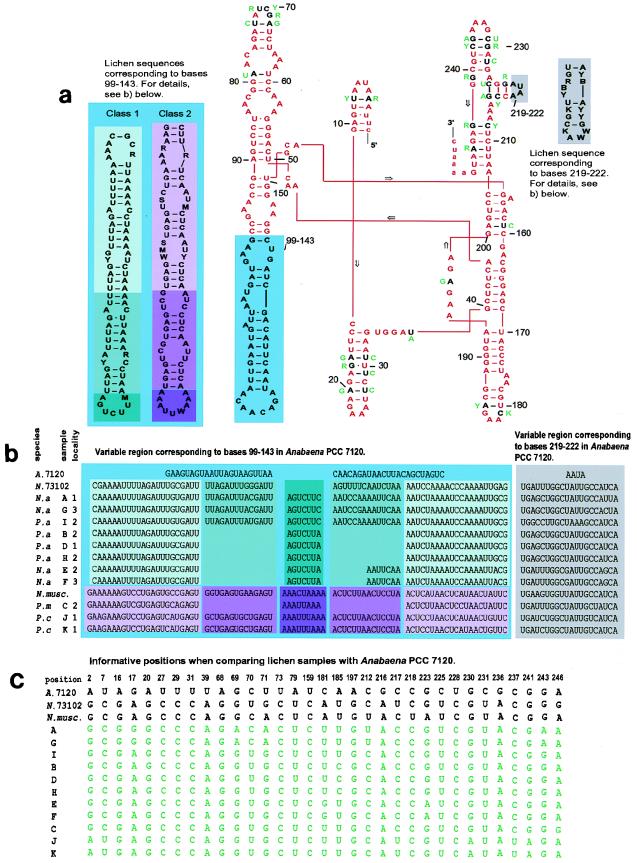FIG. 3.
(a) Two-dimensional representation of the tRNALeu (UAA) intron from Anabaena strain PCC 7120 demonstrating the secondary structure of the intron as suggested by Cech et al. (4). The intron is shown in capital letters. Comparisons with the lichen cyanobiont sequences from this study are made in the model. Identity between Anabaena strain PCC 7120 and all lichen sequences is shown in red. Where differences occur, these are indicated either in the colored boxes on the sides (further explained for panel b) or in green next to their respective position (further explained for panel c). The fact that the intron has a secondary structure clearly restricts evolutionary changes to certain positions and regions. Compensating base pair changes and base pairing of the G · U type retain the secondary structure. (b) Size differences found by comparing Anabaena strain PCC 7120 with sequences in this study occur in two regions corresponding to positions 99 to 143 and 219 to 222 in the Anabaena strain PCC 7120 sequence. In one of these regions (corresponding to bases 99 to 143), the lichen sequences can be aligned to either of two classes. Size differences within each class occur due to insertions and deletions. Note that some samples (E and F) do not readily fit into the folding of this region as suggested in the legend to panel a. Sequences from free-living strains also obtained in this study are included. (c) Informative positions when comparing alignable regions (all bases except those corresponding to the variable regions shown in panel b) of the tRNALeu intron from Anabaena strain PCC 7120 and of all sequences obtained in the present study. N.a, N. arcticum; P.a, P. aphthosa; P.c, P. canina; P.m, P. membranacea; A. 7120 Anabaena strain PCC 7120; N.73102, Nostoc strain PCC 73102; N.musc, N. muscorum.

